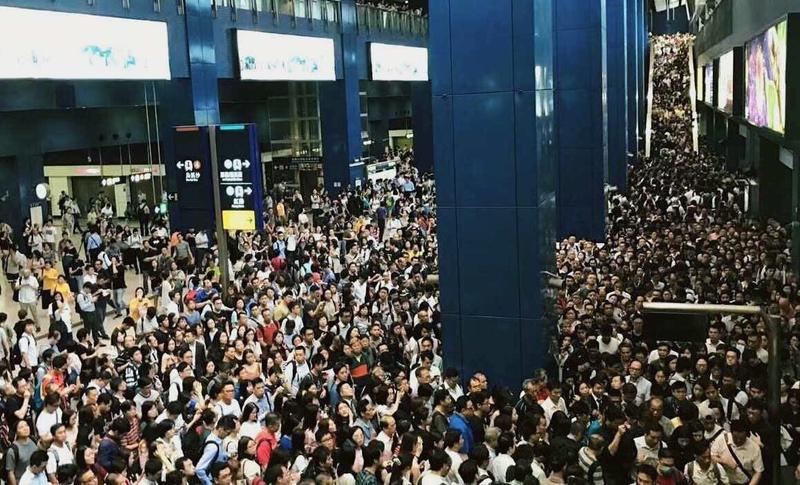 This photo taken on Sept 17, 2018 shows Tai Wai MTR station packed with commuters in the morning, a day after Typhoon Mangkhut struck a glancing blow on Hong Kong. (PHOTO PROVIDED TO CHINA DAILY)
This photo taken on Sept 17, 2018 shows Tai Wai MTR station packed with commuters in the morning, a day after Typhoon Mangkhut struck a glancing blow on Hong Kong. (PHOTO PROVIDED TO CHINA DAILY)
HONG KONG – People in the city are trying hard to cope with the situation in the aftermath of Mangkhut, the most intense storm in the city’s history.
The storm left around 1,500 fallen trees and 600 road sections with barriers in the city, causing a great impact on the city's transportation network.
Secretary for Security John Lee Ka-chiu called the damage “serious and extensive”.
Wu Ning, a student from City University of Hong Kong, took a winding journey to Shenzhen. His original plan – going to Yuen Long by metro and then bus to Shekou Control Point – failed as traffic was caught in jam in Yuen Long.
His second attempt – going back to Hung Hom metro station to take East Rail Line to Lo Wu Control Point – failed as well since the service along East Rail Line between Tai Po Market Station to and from Sheung Shui Station remained suspended due to fallen trees blocking the road.
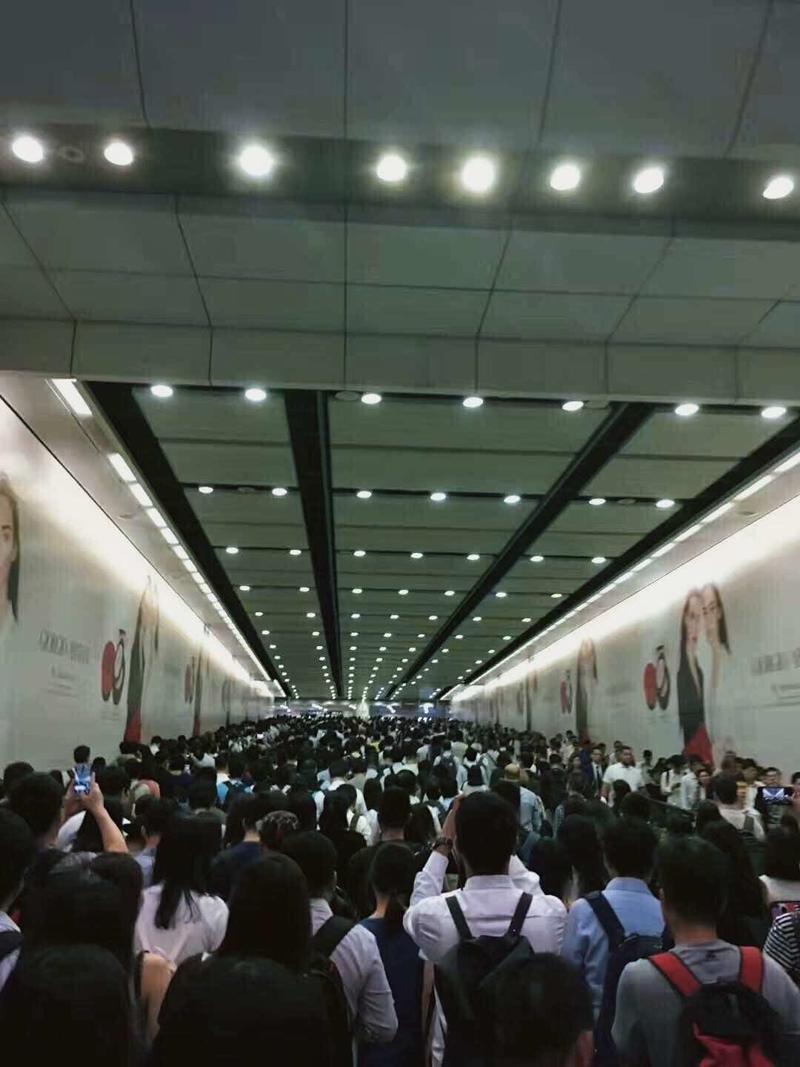 Commuters heading to work struggle to move forward at an underpass at Central Station, in Hong Kong, on Sept 17, 2018, a day after the city was battered by one of the most powerful storms on record. (PHOTO PROVIDED TO CHINA DAILY)
Commuters heading to work struggle to move forward at an underpass at Central Station, in Hong Kong, on Sept 17, 2018, a day after the city was battered by one of the most powerful storms on record. (PHOTO PROVIDED TO CHINA DAILY)
He said he had no choice but taking off at the Tai Po Market Station and hiring a taxi to Lo Wu.
Wan Tuo, 32, a real estate engineer, lives in Shenzhen on weekends and works in Hong Kong. A taxi driver demanded HK$1,000 for a ride from Sheung Shui to the Central where he works. He eventually decided to go back to Shenzhen instead.
He said one of his friend who lined up for a bus at Sheung Shui Station needed three hours to reach Kowloon Tong.
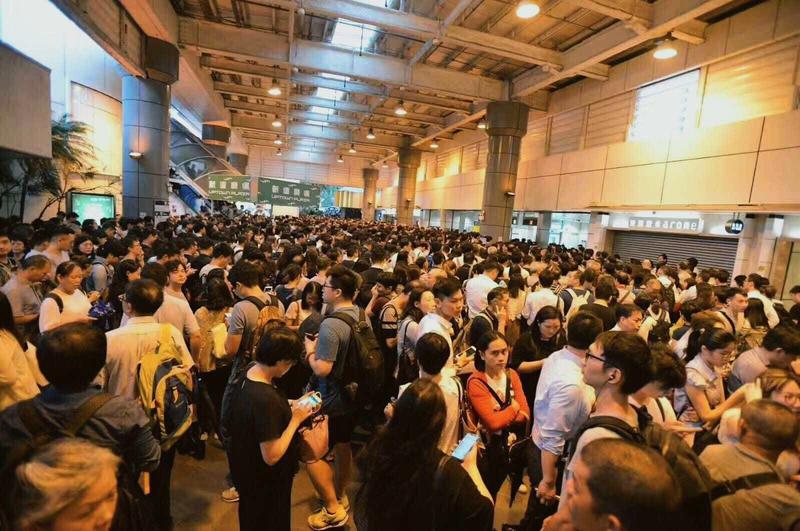 This photo taken on Sept 17, 2018 shows a crowded Tai Po market, Hong Kong, as people try to get to work. (PHOTO PROVIDED TO CHINA DAILY)
This photo taken on Sept 17, 2018 shows a crowded Tai Po market, Hong Kong, as people try to get to work. (PHOTO PROVIDED TO CHINA DAILY)
The storm also triggered vegetable price increase in the city.
A vendor in Chun Yeung Street Market said the price of vegetables went up, some even doubled after Typhoon Mangkhut, but the supply is stable.
Among all vegetables, the price of choy sum, also known as Chinese flowering cabbage, rose from about HK$8 per kilogram to some HK$52.
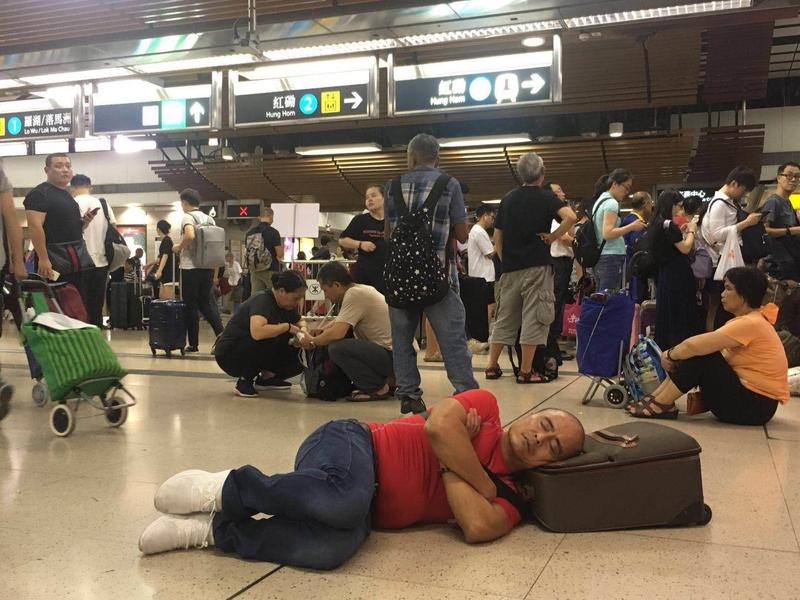 A passenger grows tired of waiting for transport services and lies on the ground to take a nap in Sheung Shui Station along the East Rail Line, Hong Kong, Sept 17, 2018. (LI BINGCUN / CHINA DAILY)
A passenger grows tired of waiting for transport services and lies on the ground to take a nap in Sheung Shui Station along the East Rail Line, Hong Kong, Sept 17, 2018. (LI BINGCUN / CHINA DAILY)
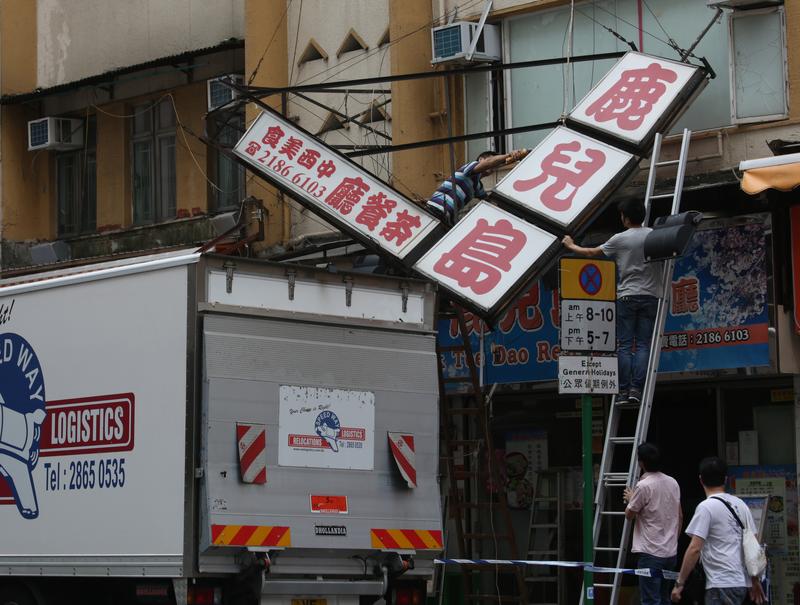 Workers try to put the signboards back in place in North Point, Hong Kong, on Sept 17, 2018, after strong winds brought by Typhoon Mangkhut dislodged them. (PARKER ZHENG / CHINA DAILY)
Workers try to put the signboards back in place in North Point, Hong Kong, on Sept 17, 2018, after strong winds brought by Typhoon Mangkhut dislodged them. (PARKER ZHENG / CHINA DAILY)
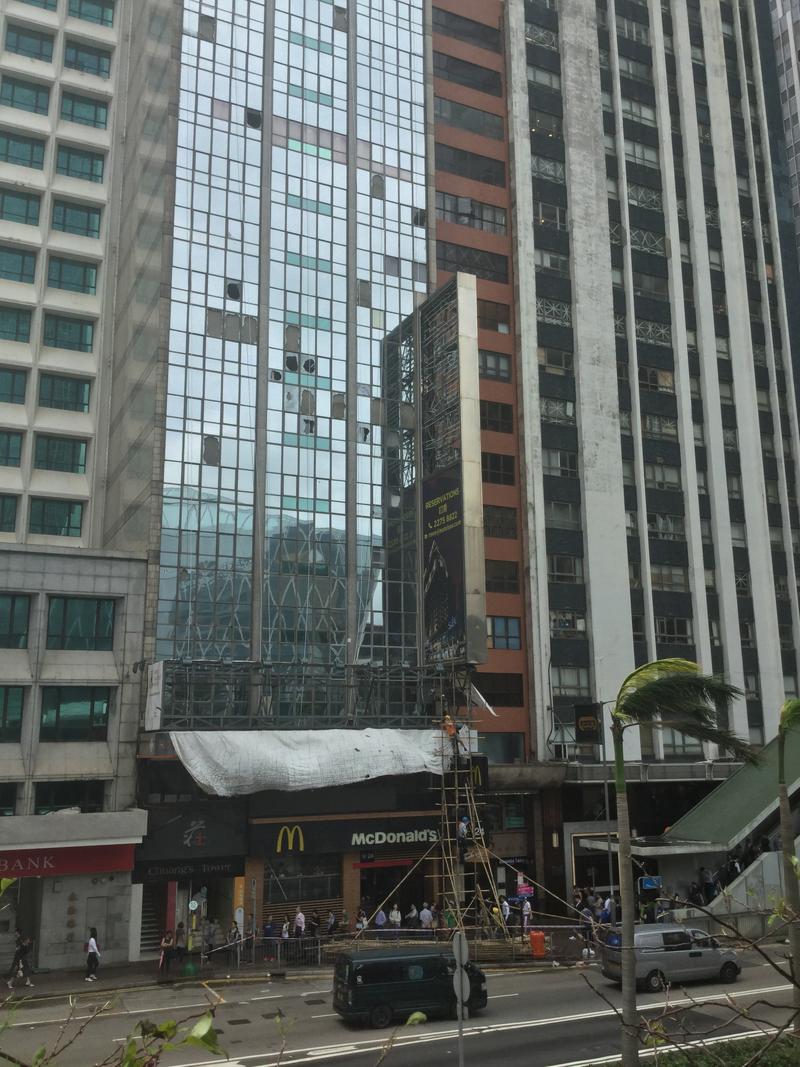 A building near Des Voeux Street Central is under repairs on Sept 17, 2018. (CHEN ZI MO / CHINA DAILY)
A building near Des Voeux Street Central is under repairs on Sept 17, 2018. (CHEN ZI MO / CHINA DAILY)
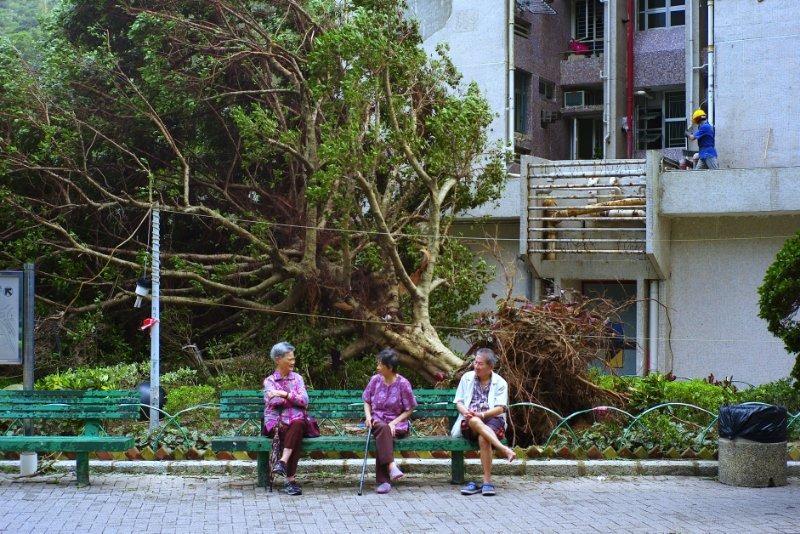 Three elderly residents chat with a fallen tree in the background in Tseung Kwan O district, Hong Kong, on Sept 17, 2018. (CALVIN NG / CHINA DAILY)
Three elderly residents chat with a fallen tree in the background in Tseung Kwan O district, Hong Kong, on Sept 17, 2018. (CALVIN NG / CHINA DAILY)
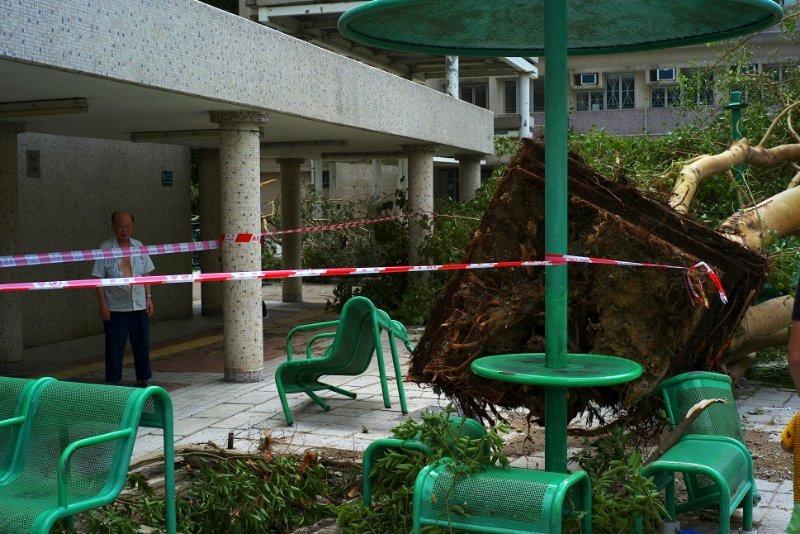 A man regards an area cordoned off after a tree was uprooted by strong winds the day before. In Tseung Kwan O district, Hong Kong, on Sept 17, 2018. (CALVIN NG / CHINA DAILY)
A man regards an area cordoned off after a tree was uprooted by strong winds the day before. In Tseung Kwan O district, Hong Kong, on Sept 17, 2018. (CALVIN NG / CHINA DAILY)
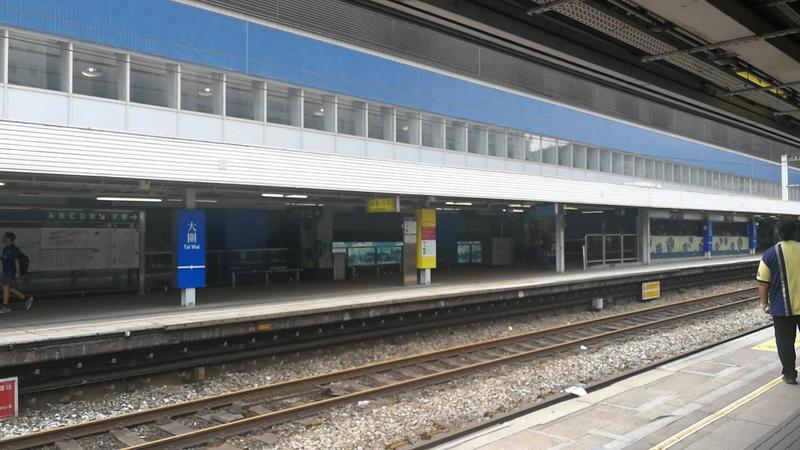 This photo taken on Sept 17, 2018 shows one side of the platforms at Tai Wai Station, along the East Rail Line, empty as it is closed for services. Trains that go in both directions need to co-use the other side of the tracks. (YANG ZEKUN FOR CHINA DAILY)
This photo taken on Sept 17, 2018 shows one side of the platforms at Tai Wai Station, along the East Rail Line, empty as it is closed for services. Trains that go in both directions need to co-use the other side of the tracks. (YANG ZEKUN FOR CHINA DAILY)
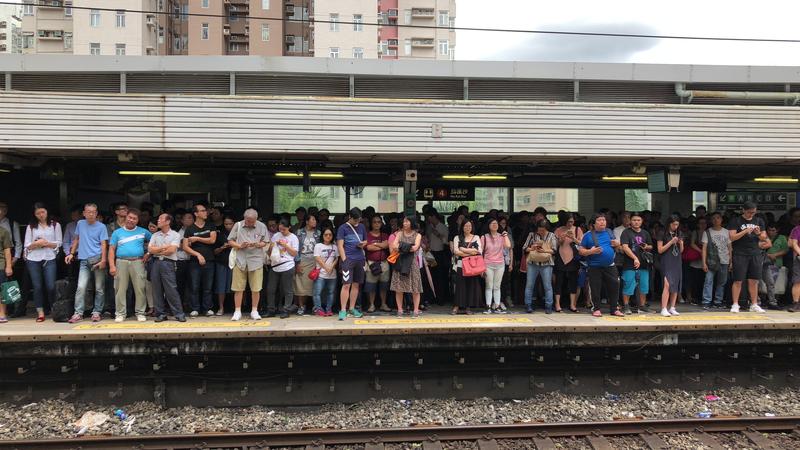 This photo taken on Sept 17, 2018 captures the crowd on a platform at Tai Wai Station, along the East Rail Line. Trains that go in both directions need to co-use one side of the tracks as the after the other has been closed. (YANG ZEKUN FOR CHINA DAILY)
This photo taken on Sept 17, 2018 captures the crowd on a platform at Tai Wai Station, along the East Rail Line. Trains that go in both directions need to co-use one side of the tracks as the after the other has been closed. (YANG ZEKUN FOR CHINA DAILY)
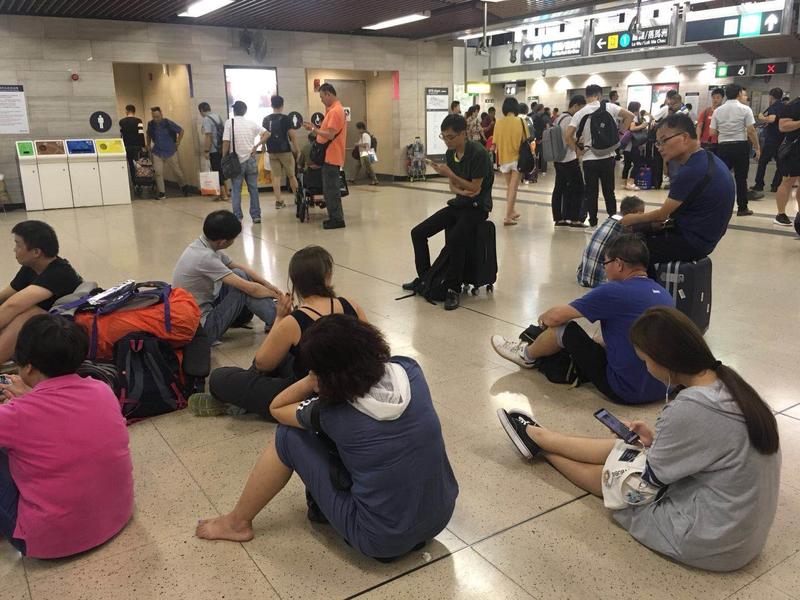 In this photo taken in the afternoon of Sept 17, 2018, people wait for train services to resume at Sheung Shui Station, along the East Rail Line. (LI BINGCUN / CHINA DAILY)
In this photo taken in the afternoon of Sept 17, 2018, people wait for train services to resume at Sheung Shui Station, along the East Rail Line. (LI BINGCUN / CHINA DAILY)
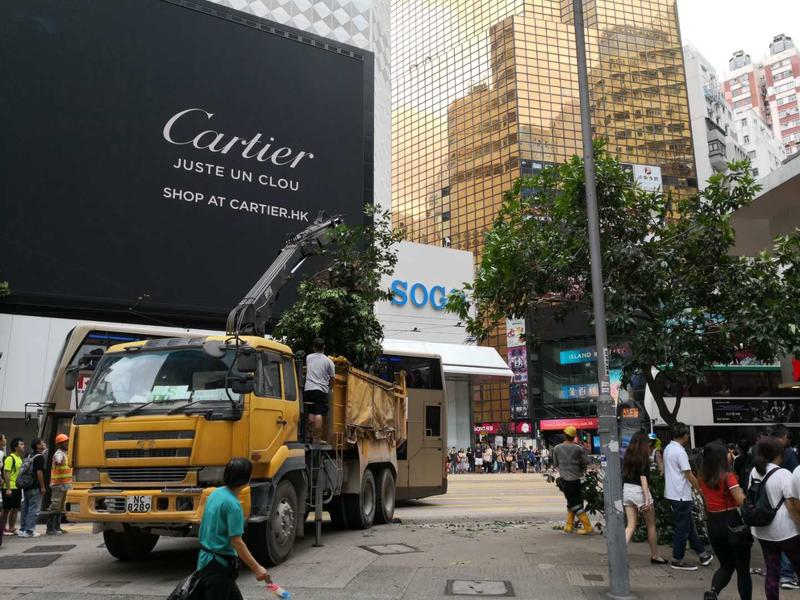 Workers winch up an uprooted tree near Sogo, a department store at Causeway Bay, Hong Kong Island, Sept 17, 2018. (KATHY ZHANG / CHINA DAILY)
Workers winch up an uprooted tree near Sogo, a department store at Causeway Bay, Hong Kong Island, Sept 17, 2018. (KATHY ZHANG / CHINA DAILY)
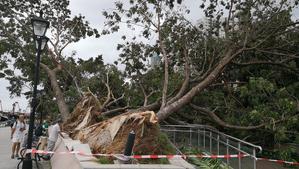 Uprooted trees get a close inspection by passersby at Aberdeen Promenade Pier in south Hong Kong Island, Sept 17, 2018. (KATHY ZHANG / CHINA DAILY)
Uprooted trees get a close inspection by passersby at Aberdeen Promenade Pier in south Hong Kong Island, Sept 17, 2018. (KATHY ZHANG / CHINA DAILY)


